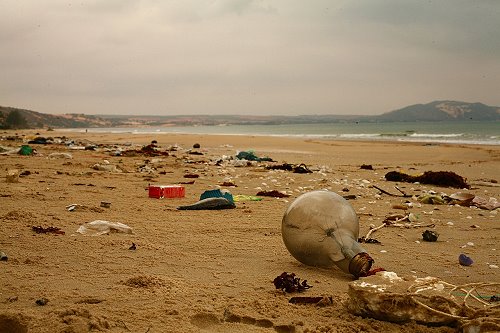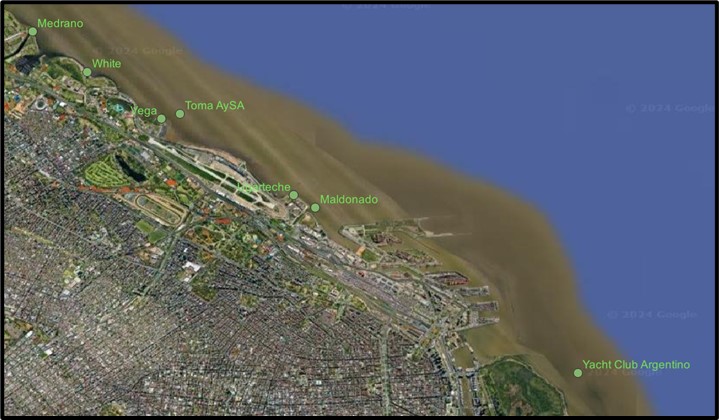 In March 2022, the United Nations Environment Assembly decided to establish an Intergovernmental Negotiating Committee (INC) to develop a legally binding international treaty to address plastic pollution throughout its lifecycle, from production to disposal. This treaty, expected to be the most ambitious to date, could be finalised between 2024 and 2025, and would regulate plastic use in a similar way to climate change agreements. It is currently in a particularly critical phase of the international negotiations where proposals to drastically reduce plastic use and replace fossil fuel feed stock by biodegradable raw materials meet with resistance from countries and lobbies wedded to gas and oil.
In March 2022, the United Nations Environment Assembly decided to establish an Intergovernmental Negotiating Committee (INC) to develop a legally binding international treaty to address plastic pollution throughout its lifecycle, from production to disposal. This treaty, expected to be the most ambitious to date, could be finalised between 2024 and 2025, and would regulate plastic use in a similar way to climate change agreements. It is currently in a particularly critical phase of the international negotiations where proposals to drastically reduce plastic use and replace fossil fuel feed stock by biodegradable raw materials meet with resistance from countries and lobbies wedded to gas and oil.
On 13 September 2024, Argentina’s Secretariat of the Environment, in collaboration with the Ministry of Foreign Affairs and the Secretariat of Fisheries, organised a workshop on plastics and microplastics (MP) in the country’s coastal marine environment. The purpose of the meeting was to bring together national research teams to work on a proposal for an international agreement to regulate the production and consumption of plastic. A total of 58 projects from different coastal provinces were presented many of which focused on the issue of microplastics.
One of the projects is led by a group of researchers from prestigious institutions in Argentina, with which Mundus maris collaborates. This team was formed thanks to the initiative of Marcelo Morales Yokobori, from the University of Belgrano and Mundus maris, Diego Moreira from the Centre for Marine and Atmospheric Research (CIMA-CONICET-UBA) and Pablo Zorzoli from the Naval Hydrography Service (SHN), joined then by Matías Cornú, also from the SHN, and Alejandra Elisei from the National Institute of Industrial Technology (INTI).

The aim of the study is to investigate the presence of microplastics in samples collected at eight sites located at the mouths of rivers and underground channels in the city of Buenos Aires, one of the major centres in Latin America where urban runoff enters through storm drains. Both water column and sediment samples will be analysed, and microplastics will be identified not only by their colour and shape but also through spectroscopy to determine their molecular composition and infer potential sources of contamination. The project also includes interannual and seasonal comparisons.
Microplastics are a major concern due to their ability to adsorb compounds such as persistent organic pollutants (POPs), pesticides, and heavy metals, which can enter the food chain through bioaccumulation and biomagnification, concentrating toxins in animals and humans. In addition, microplastics typically contain toxic additives such as plasticizers, bisphenol A (BPA), and flame retardants, which can leach out and pose health risks, including oxidative stress, endocrine disruption, and cancer. They can also carry pathogenic microbes, increasing public health risks. Although the full impact of microplastics on human health is still being studied, it is known that they increase exposure to pollutants and toxicity, especially with prolonged exposure.

Map of sampling sites in Buenos Aires
Their small size, persistence, and ability to infiltrate biological systems make them particularly dangerous, even without considering their role as vectors of pollutants. Fragments smaller to 20 microns can cross biological barriers, and cause inflammation, oxidative stress, and endocrine disruption, potentially leading to cardiovascular, neurodegenerative, and reproductive disorders. When inhaled, microplastics can irritate the lungs, causing inflammation and aggravating respiratory diseases. Their accumulation in organs such us the lungs and intestines poses long-term bioaccumulation risks.
Previous studies conducted on fish from the Buenos Aires Fishing Club, carried out at the University of Belgrano, showed that all individuals examined contained microplastics, with fibres being the predominant type, mostly white or transparent, followed by red, green, blue, and black ones. These fibres are visually resembled to those found in clothing commonly worn in large urban centres like Buenos Aires. These studies taken together should strengthen the arguments for a binding treaty.
A recent publication in the leading journal Nature spelled out the four-pronged approach required to avoid disaster from climate change enhancing effects and untold levels of pollution if projected increases in plastics are not curbed effectively by the treaty and flanking measures. The authors propose a vision for a circular plastic economy. The paper lays out an extremely ambitious “roadmap outlining the scale and timing of the economic and legal interventions that could possibly support this. Assessing the service lifespan and recoverability of plastic products, along with considerations of sufficiency and smart design, can moreover provide design principles to guide future manufacturing, use and disposal of plastics.”
Reducing exposure to microplastics and the pollutants they carry is essential, highlighting the need to minimise plastic waste at source. Although this will require a huge international effort, it’s vital that agreements are reached that include the textile industry.
